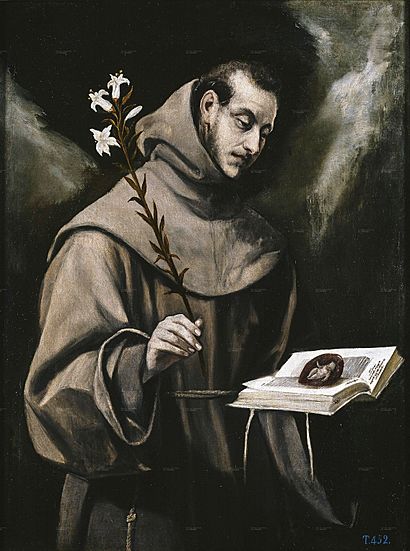Saint Anthony of Padua (El Greco) facts for kids
Quick facts for kids Saint Anthony of Padua |
|
|---|---|
 |
|
| Artist | El Greco |
| Year | 1580 |
| Medium | oil on canvas |
| Dimensions | 104 cm × 79 cm (41 in × 31 in) |
| Location | Museo del Prado, Madrid |
The Saint Anthony of Padua is a famous painting created in 1580 by a well-known artist named El Greco. This artwork is made with oil paints on a canvas and can be seen today at the Museo del Prado in Madrid, Spain.
This painting shows Anthony of Padua, who was a Catholic saint. He is shown with special items that help people recognize him. These items include a white lily, which often represents purity, an open book, and a small image of the Christ Child.
Contents
About the Painting
What the Painting Shows
The painting features Saint Anthony of Padua, a very important figure. He is shown with symbols that are often linked to him. The lily flower stands for his pure life. The open book might represent his wisdom or his teachings. The image of the Christ Child reminds us of a story where Saint Anthony had a vision of Jesus as a child.
El Greco's Style and Influences
The background of the painting has many clouds. This cloudy style shows how much Michelangelo, another famous artist, influenced El Greco when he was younger. Michelangelo was known for his powerful and dramatic art.
El Greco also used quick brushstrokes in this painting. This technique was inspired by artists like Titian and Tintoretto. These artists were famous for their lively and expressive painting styles.
Artist's Signature
If you look closely at the edge of the book in the painting, you can find El Greco's signature. It says "IN MANO DI DOMENICO" in large Greek letters. This means "by the hand of Domenico," which was El Greco's real first name.
See also
- List of works by El Greco
 In Spanish: San Antonio de Padua (El Greco) para niños
In Spanish: San Antonio de Padua (El Greco) para niños

